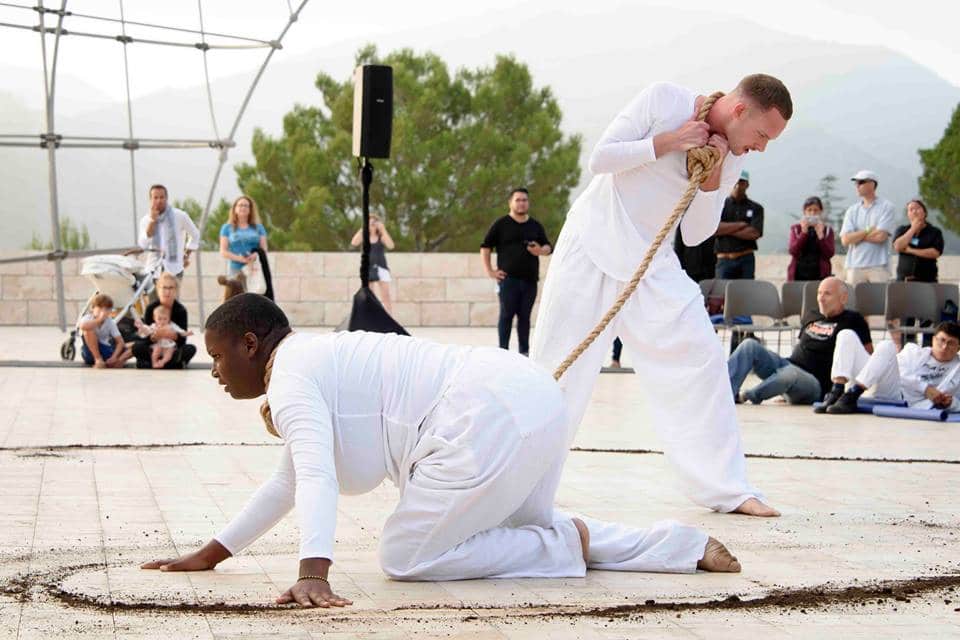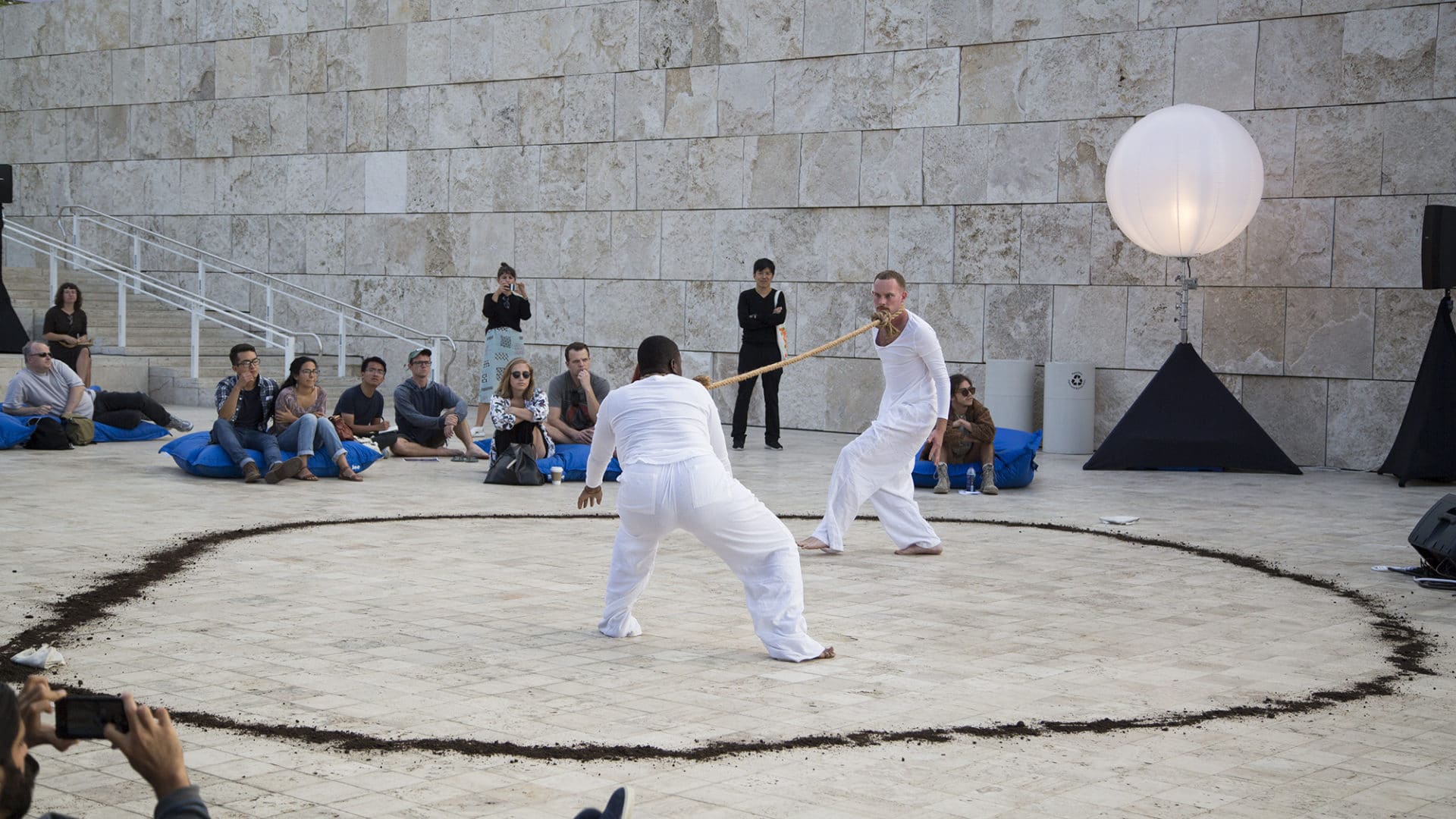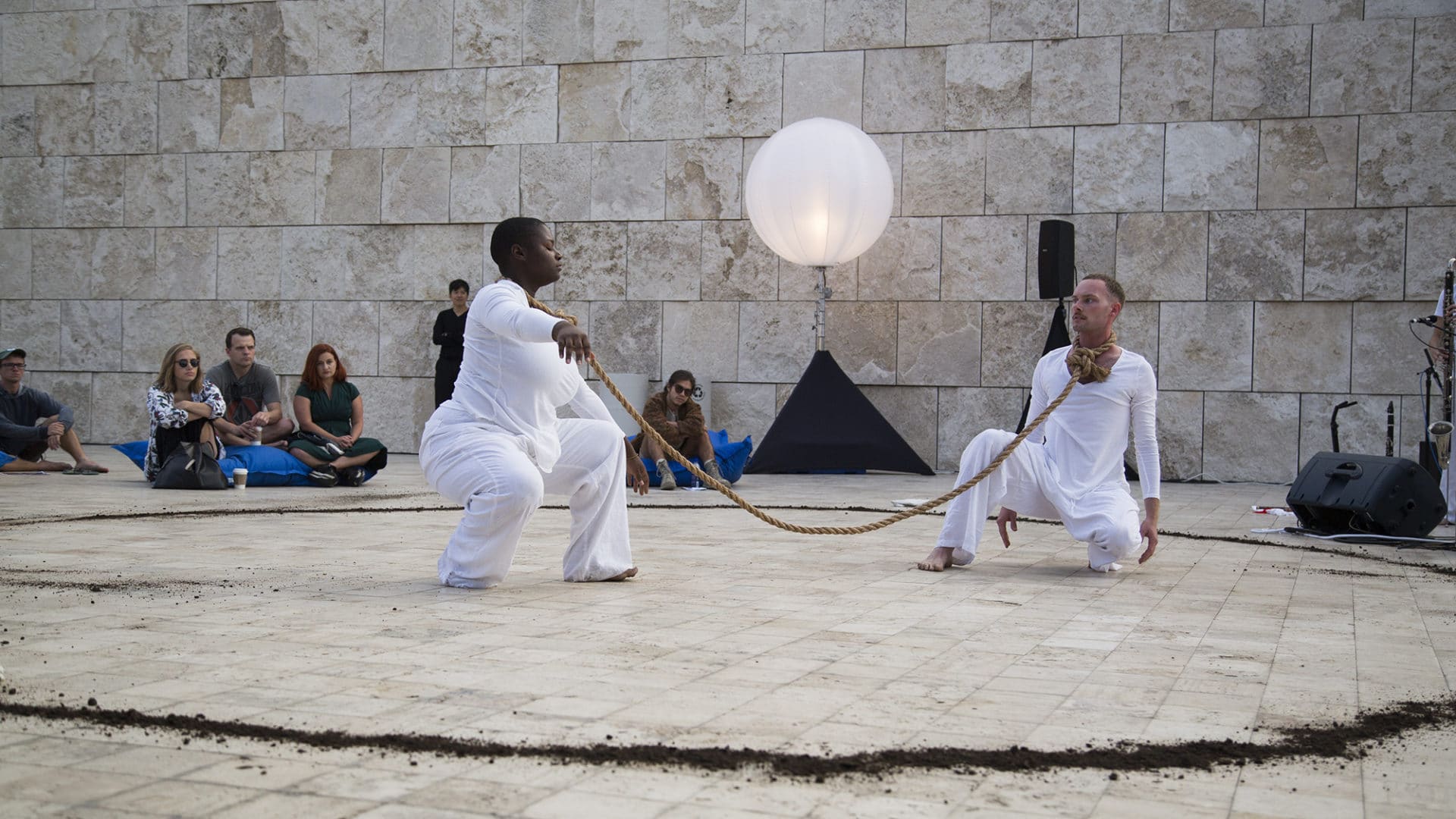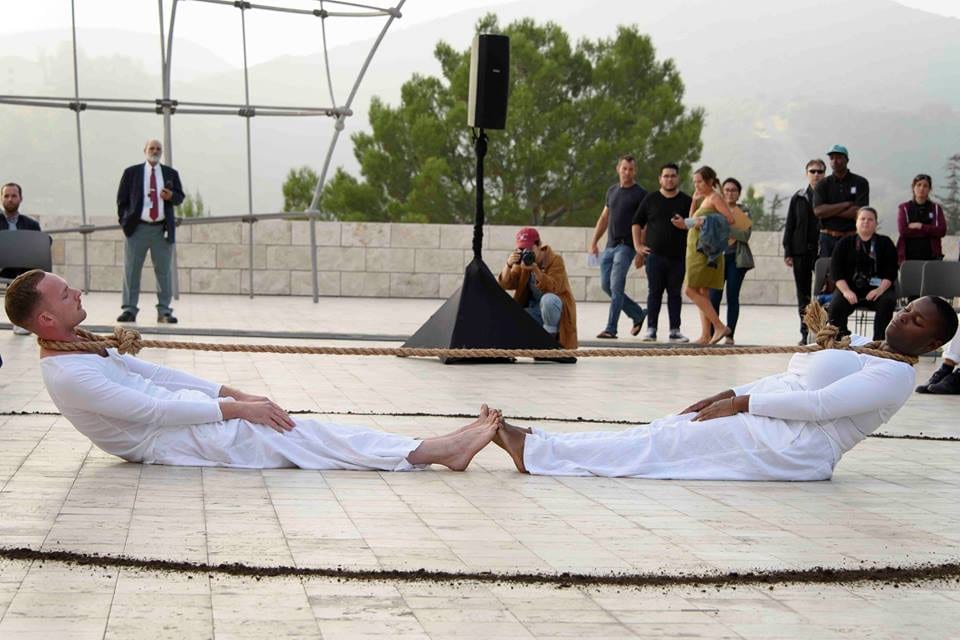This image has been returning to me.
I’ve been meaning to write, intending to reflect in words, on this piece for over four years. I was waiting for the right time. To let it sink in. To feel its meaning. For the right moment of peace or clarity.
This is not a moment of peace, far from it, and yet it has propelled me into the lucidity I was searching for, wanting.
There is never a right time. This thought alone illustrates my privilege, my comfort in knowing that I will have time, that my time is protected. I am guaranteed a future. This is afforded by my whiteness, my maleness, my class, my abilities and the opportunities I’ve been given based on those things. This is a personal reckoning. I will honor it for myself in the spirit of unlearning and self-work. I will honor it in the spirit of resistance that has existed for centuries. I will honor it in order to educate myself and those around me in the call to dismantle the systemic injustices that shape our reality.
The image of the Nowannago, the double-ended noose, is confrontational. Potentially offensive. Sensitive. Insensitive. A representation of violence. Kenyatta A. C. Hinkle dreamt the sculpture 12 years ago, although I’m sure it was floating around her psyche long before.
I know the noose to be a metonym of white violence; an agent of the hatred and murder that is imbedded in the project of white supremacy that dates back to the first efforts of colonization by affluent European empires. The enslavement of black human life, the project of dehumanization that serves a capitalist material gain first and foremost for white people, and occasionally for those who assimilate to the rules of whiteness. A project in service of an illusion of white superiority through the implementation of domination.

While I have opened the window to write I must attribute it to the urgency found in this moment. Outside I hear rage. Hundreds of thousands of protestors are assembling and demanding action in all 50 states and throughout countries around the world. There is a reckoning. I locate my rage by realizing I’ve inherited a violent oppressive system I did not create and do not believe in. The rope is around my neck, too. It is the same rope but the stories it has told me, the history that supports me looks and sounds and feels and shapes the world much differently than it has for my collaborator Kenyatta.
By simple observation a white man and a black woman are at opposite ends of the project of white supremacy. But there is a connection, an inseparability. My whiteness, my maleness, my class privilege, my ability to see and feel a future are afforded by that rope, in my white relation to the black “race”. After all, race is a construct intended to separate human beings, human lives, according to an optical hierarchy. There is nothing inherent about race. DNA is DNA. Melanin has no meaning until it was prescribed. That prescription was decided by white people to favor white people. Differentiation is implemented for the illusion of power. Power over. I am good, I am better, I am stronger, I deserve more, because they are less, they are weak, they are inferior, they are bad. The correlation is clear.
But for the white oppressor this is a paradoxical realization; I’m afforded the privileges to embrace, however difficultly, however messy, this analysis, this writing, because of that history of domination. I am afforded the education, time, and access to resources that educate myself about racism, rather than experiencing it firsthand. Part of my agency in this moment depends on that history of domination. That history to which I am tethered, regardless of my feelings about it. That history that I am repulsed by. That history that fills me with rage. What is privileged white rage in this moment of reckoning?
Many may see the image of my white body wearing a noose that is connected to a black woman’s body and become immediately offended. I understand this sentiment. I have grappled with my own hesitations about this reality and for how to hold space for those who find my role in the work to be insensitive, offensive, careless or perhaps racist. I will state that by confronting those feelings within myself I am hopefully becoming an agent to confront them in other white people. By seeing the noose around my white neck, a white person can identify in my role easier than when they see images of black bodies with nooses around their necks. After all, there are thousands of lynching images, produced over hundreds of years. These, in addition to the hundreds of videos of black men being murdered by police and representations of symbolic nooses around the necks of black characters in most television programs.

My decision to perform this piece with Kenyatta is not about becoming a hero, rather it is about confronting my shame. I don’t write this with a sense of self-importance or to impress for accolades. I do not seek applause. Rather I ask myself: If I am forced to look at my friend Kenyatta with a noose around her neck while I feel that same rope tighten around my own, what do I have to learn? What does this relation offer an audience? What this performance tragically illustrates is the inability to untether the effects of centuries of racial oppression and violence from my peaceful, loving, caring relationship with Kenyatta as a friend, co-teacher, and artistic collaborator. This realization, while difficult to look in the face, humanizes our interaction – it acknowledges the inherent violence of racial construction and the impossibility of us getting out of this mess by using the same tools with which it is built and maintained. As long as white people maintain the noose of racism, the noose, too, will remain around their own necks.
In all my work I look to examples of resistance throughout history. The issues that shape this moment of social uprising are nothing new. The projects of white supremacy, capitalism, patriarchy and imperialism are centuries old. They are implemented in all levels of society and culture. They are protected by the laws that shape our nation. They are imbedded in the language that shapes our psyches. They are enacted by how land is possessed and how access is granted to resources. They are in the very air we inhale as we take our first breath.
What feels different in this moment is the acceleration and scale with which these issues are recognizable, communicated, critiqued, and resisted beyond only marginalized communities. Unregulated capitalism, the economic system that has allowed for 8 billionaires to amass half of the world’s wealth, has offered the masses access to a digital voice found in our smartphone – a different agency than we’ve seen in previous large-scale uprisings (save the Occupy and #metoo movements). That agency can film police brutality, leak incriminating documents, amplify anti-racist tools, coordinate action and inspire a revolution. These actions can happen with an unprecedented immediacy. This technology can also desensitize, but only to a point. A point of being pushed to our physical and mental limits. A point of being fed up. Is now that tipping point?
What we are experiencing in the United States is a moment of uncomfortable introspection resulting from a 3-month lockdown due to a global health pandemic, the largest unemployment since the Great Depression, and a neo-fascist in the White House who maintains his power through a strategy of implementing chaos: a sea of inflammatory Tweets, executive orders, attacks on the press, pivots, gaslighting, photo ops, childish meltdowns, false accusations, daily press conferences, and rallies, all in service of spinning any truth into a lie to distract and protect himself. He has maintained the same methodology his entire professional career. As his lies pile up, it is hard to see past or through them, they block our vision and confuse what’s real, fake, true, or sometimes even a joke. This, coupled with a full-scale attack on democracy and journalism, has propelled us into a post-truth society. When it is nearly impossible to locate the truth, who and what can we trust? The result is an overwhelming sense of anxiety that leads to helplessness. Even for white people. Unlike never before, more white people are disenfranchised due to unemployment and low wages, expensive healthcare and prescriptions, the immediate and long-term effects of the climate crisis, student debt, substance abuse, all set within a culture war between the left and right that further alienates us from each other. As long as our automatic payments keep pumping out from our anemic bank accounts, the 1% are sustained and we, like zombies, result to infighting and exhaustion, only to wake up the next day in search of pennies. With unregulated capitalism performing psychological warfare, the process of dehumanization has finally infected white lives.
To make America great again is a call to return to a time when the majority of white people still had access to the American dream, even if it was only to barely touch it for a fleeting moment. That was a time before there was a 1%. That was a time before democracy was completely held hostage by corporate America. It was a time before technology rendered the industrial workforce obsolete. It was a time before the richest Americans were awarded the steepest tax cuts in history. It was a time when the United States deployed tactical and violent imperialism under the guise of democracy. The problem for the angry, disenfranchised, dehumanized white Americans who are nostalgic for this past is that time, at least the popular conception of time, does not move backward. Perhaps the baby boomers, who hold the majority of positions of authority, are ultimately scared of their mortality; the fact they are entering the last bit of this blessed consciousness, and with that realization, selfishly want more of what they used to have. But it doesn’t exist any more. The over fertilized tree of free market deregulated capitalism dropped too many fruits and polluted the soil, rotting the roots. But they keep looking up, hoping for more fruit instead of looking down to realize the tree will not stand much longer.

Perhaps what the Nowannago offers me is a direct stare into the face of another human being that is uninterrupted by the chaos of the moment. There is an immediate and undeniable danger for how my movement could harm Kenyatta, and how she could move to harm me. The cause and effect is laid bare. There is care in this acknowledgement. To prepare for the performance we spend hours talking and catching up. We have a ritual in which we locate soil from the site and gently put it into hand-sewn bags that we meditate with and carry alongside us. The performance begins by drawing a circle on the ground with that dirt, creating a stage, a safe space, a space of intentional ritual. These actions offer an extreme tenderness and intentional care that I rarely feel in other moments of my life.
To enact change we must first imagine it. The arts are where we invite imagination most frequently. In literature, film, theatre, and plastic arts we can imagine alternatives to the here and now. Our task as white people must be to re-humanize those lives which have, in our construction of whiteness, always been deemed less-than. We must value human life above property. We must stand and learn and fight and love alongside each other in a way that acknowledges difference but does not recreate the behaviors, language, and prejudicial ideologies of racial domination. We must do the work to dismantle the structures of oppression in our laws, in our spaces, and in our minds. We must do this work with an immense commitment and rigor. We must elevate voices of the oppressed and value their lives and lessons. We must learn what reparations are and how to enact them in all levels of our lives, from our finances to our thoughts.
For the white person, let this ritual slowing down, this looking in the face, this rope around our necks offer the discomfort to confront and dismantle how we have been taught to see ourselves in the world. The Nowannago, with all its embedded violence and shame, put me in a position I’ve never been before but when I felt it, it was familiar because, indeed, the rope has always been there. Perhaps it’s time for more white people to share in experiencing that feeling and holding that realization, sitting with the discomfort and pain. Then, when we’ve committed to confronting our shame and rage can we begin a road to compassion. Only then can we begin to imagine the new tomorrow structured in a project that is not based on an obsession with drawing lines of difference but rather expanding tenderness and love for all that humanity encompasses.
–
Tyler Matthew Oyer
Los Angeles, CA
2020
Tyler Matthew Oyer (b. 1987) has exhibited and performed extensively throughout the US and Europe. Recent presentations include, Exploring the Nowannago with Kenyatta A.C. Hinkle, Grand Central Art Center, Santa Ana, CA, The Getty, Los Angeles, CA, and Museum of the African Diaspora, San Francisco; SOPPEN Performance Festival, Oslo, Norway; BOFFO Festival, Fire Island Pines, NY; MoMA PS1, NY; REDCAT, Los Angeles; dOCUMENTA (13), Kassel, Germany; Hammer Museum in Los Angeles; Kunstnernes Hus Oslo, Oslo, Norway; Bergen Kunstall, Bergen, Norway; and Rogaland Kunstsenter in Stavanger. His work can be found in the permanent collection of the Museum of Modern Art (NY).


